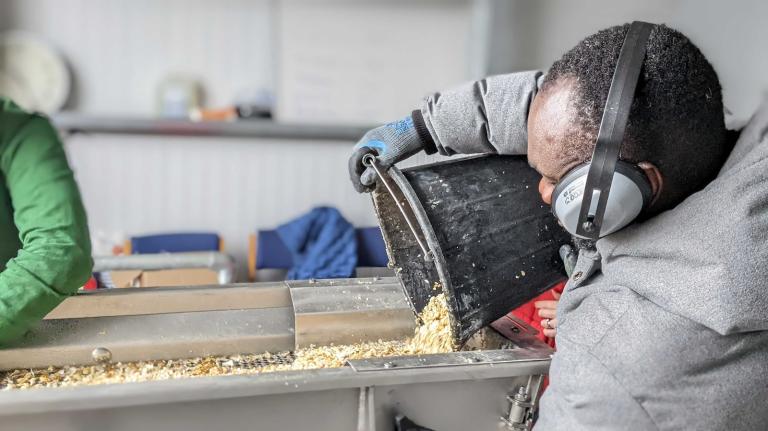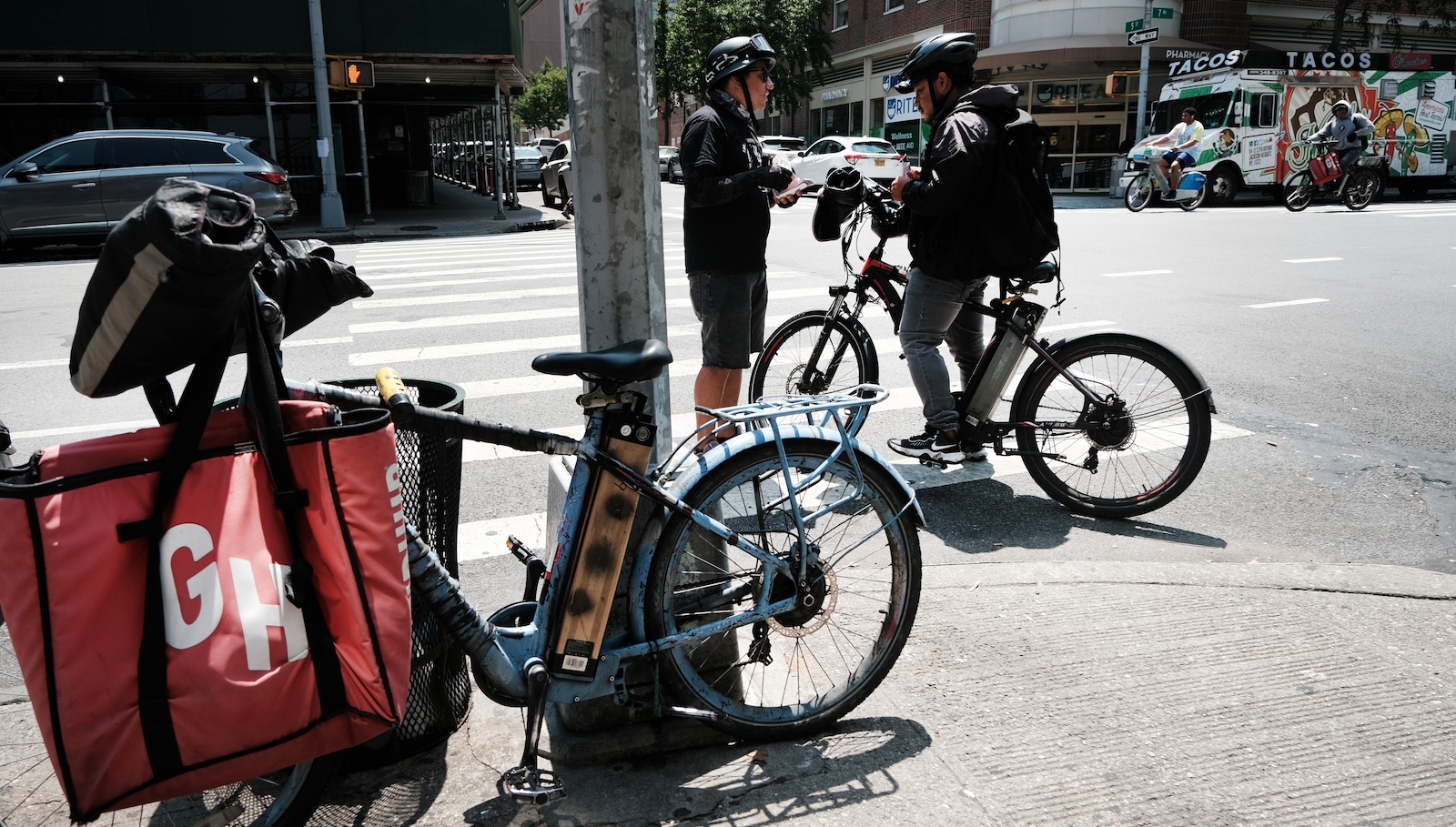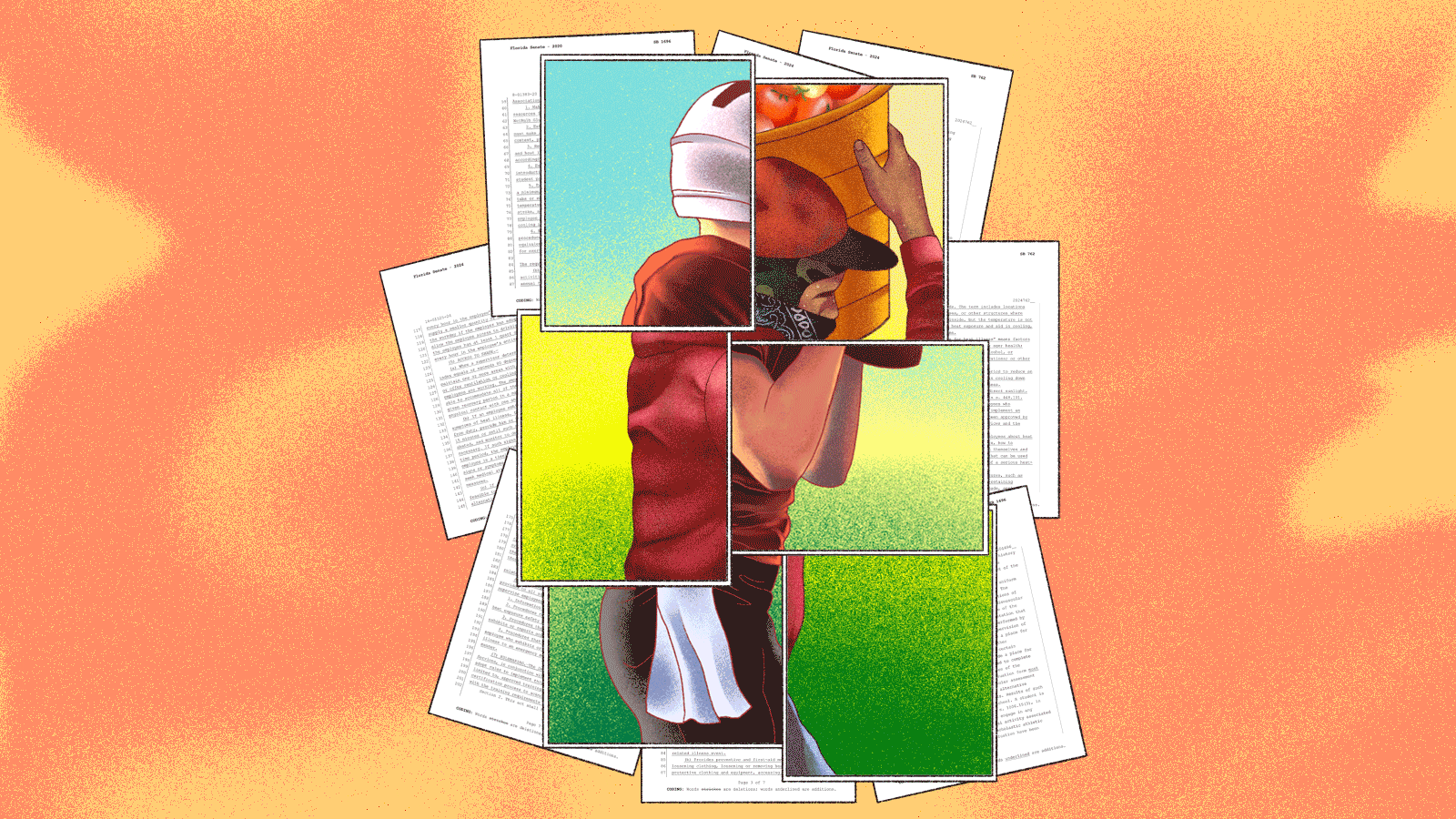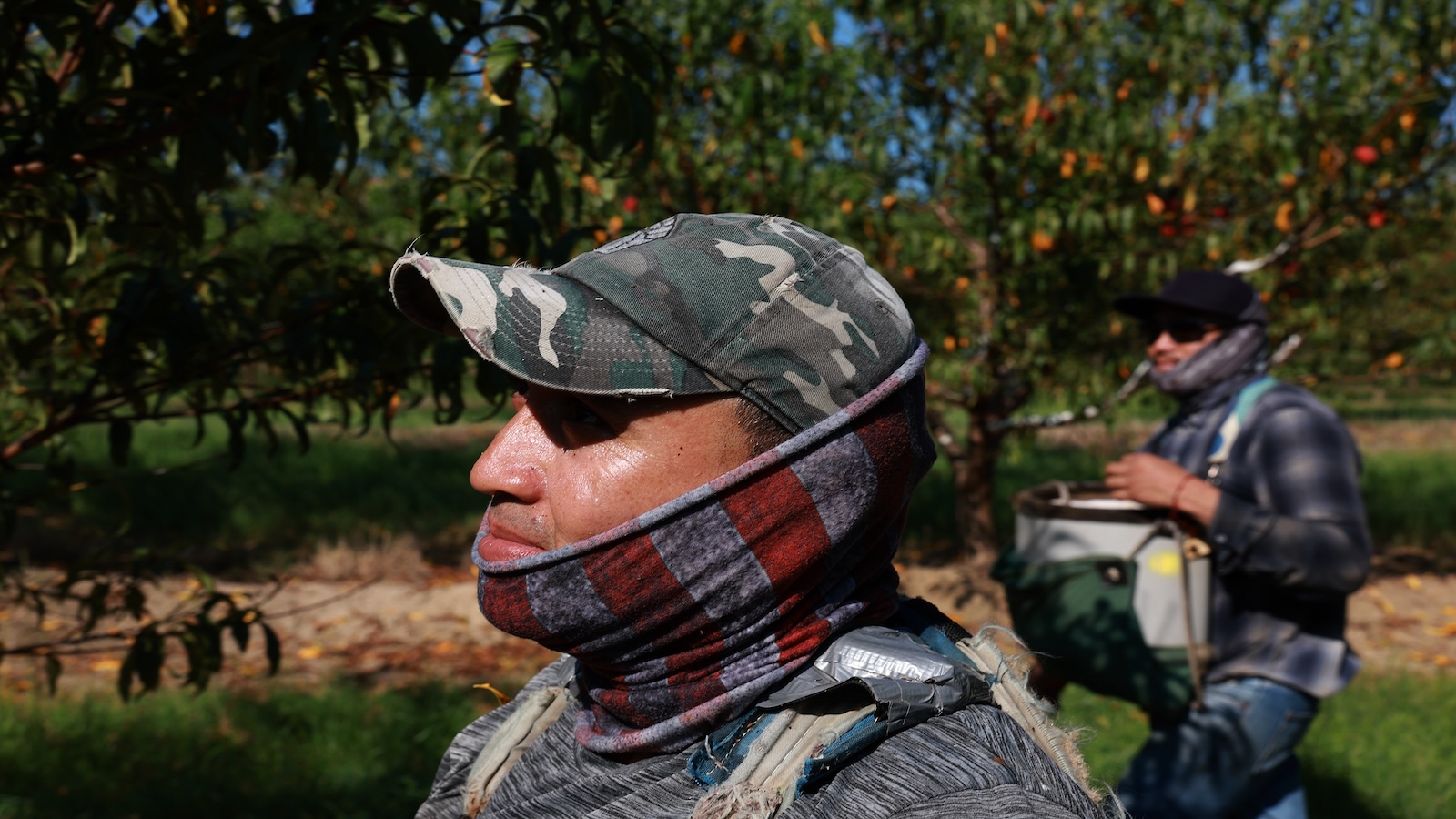New York City, the city that never sleeps, is also an incredibly hard place to take a break — if your job is jetting across town on a bike delivering takeout and groceries. “As things stand, there isn’t a designated place for us to rest while working,” Antonio Solis, an app-based delivery worker from Veracruz, Mexico, who moved to New York City five years ago, said in an interview in Spanish. “A lot of workers live in Queens or the Bronx, and they have to go as far as Manhattan for work.” Rather than ride the 10 or 20 miles home, they look for small pockets of shade in parks and plazas, or shell out for a coffee or sandwich to take advantage of eateries’ indoor seating.
The challenge of finding an acceptable break area in a city full of concrete, skyscrapers, and traffic exists year round for the more than 60,000 delivery workers in New York City. But summer makes the problem even more urgent — and this summer has been particularly brutal. Oppressive heat arrived early in New York City — the first heat wave struck in mid-June, just days before the official start of summer. By mid-July, the city had had two more heat waves (defined by the National Weather Service as streaks of three or more days with temperatures at or above 90 degrees Fahrenheit), and had already seen as many days at or above 90 degrees F in 2024 as it normally does in an entire year. Spending long periods in this kind of punishing heat presents real health and safety risks for outdoor workers. But delivery workers are getting organized — in ways large and small — to keep themselves safe in the heat.
“Protecting yourself from the heat is always complicated,” said Solis. “But you have to be prepared.”
Solis is part of Los Deliveristas Unidos — a New York City-based advocacy organization that has been tremendously effective at campaigning for the rights of delivery workers. Many of its members, known as deliveristas, are immigrant men who speak English as a second language. Since its founding in 2020, the organization has won industry-leading labor protections — most notably the city’s first ever minimum wage law for app-based delivery workers, which went into effect last summer.
While groups promoting labor rights for app-based couriers exist all over the country, the organizing landscape for Los Deliveristas is fairly specific, because of the sweeping popularity of e-bikes, mopeds, scooters, and other forms of micromobility among New York City delivery workers. These forms of transportation allow workers to cover more ground and complete deliveries in shorter amounts of time by maneuvering through traffic — a crucial advantage for providing the speed and convenience consumers expect from delivery apps.
Because couriers in New York City are necessarily exposed to the elements, hot days leave this workforce vulnerable to heat exhaustion, heat stroke, sunburn, fatigue, dizziness, and fainting. These risks are exacerbated by the urban heat island effect — in which buildings and concrete absorb and give off more heat from the sun than trees and vegetation. Climate change makes days of excessive heat more likely, heightening the need for infrastructure that protects vulnerable communities from heat waves — such as cooling centers, green roofs, and robust tree canopies.
What makes things complicated is delivery orders surge during moments of extreme weather, like heat waves and thunderstorms. “Any conditions in which the city is recommending people to stay home, and the people who have the option to stay home are staying home, that’s when the demand for our jobs is the highest,” said Josh Wood, a Los Deliveristas member who lives in Brooklyn and has been doing deliveries since 2016. “Because we’re the ones who are more willing to be outside.”
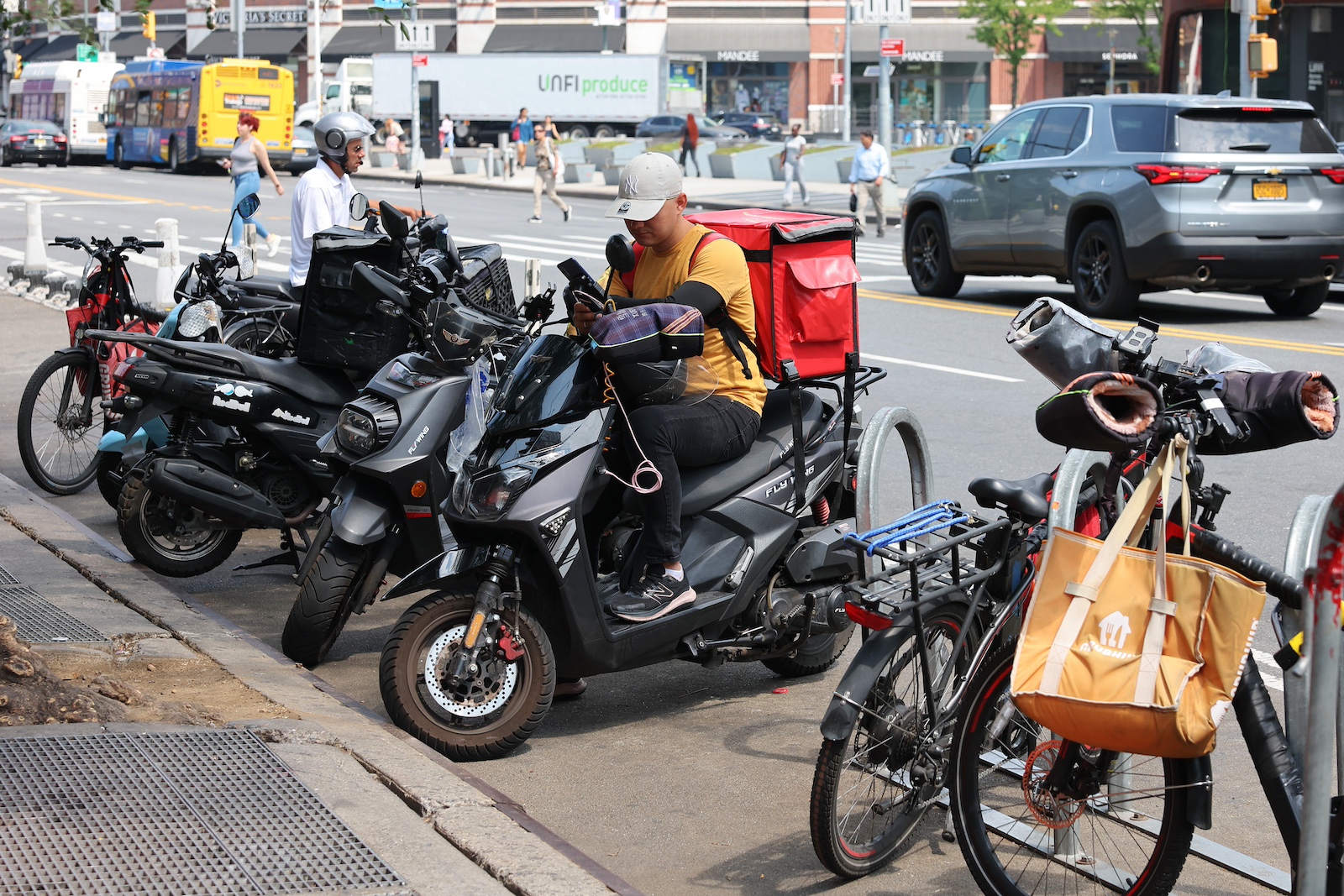
Wood spoke to Grist on the phone from a public park on a Friday in early August, a week when the city declared a heat emergency; going into the weekend, the National Weather Service warned of heat indices that could reach the low 100s F. “Everyone kind of has their own strategy” for surviving the heat, said Wood. He says he’s used the city’s public cooling centers — air conditioned spaces like libraries and community centers — but notes that they are only open during certain hours. In Manhattan’s Midtown and Financial District, “they still have some commercial buildings which have public atriums. Sometimes you just have to deal with it and find shade and drink lots of water.”
The need to make do is familiar to delivery workers who worked through the pandemic, when restaurants stopped serving customers on-site and homebound New Yorkers relied heavily on delivery.
“We risked our health for the delivery companies during COVID, and now we are doing it again,” said Bimal Ghale, a delivery worker from Queens who is a member of Justice for App Workers, a national coalition of rideshare and delivery workers. For Ghale, the COVID-19 pandemic represented a public health crisis that both proved the necessity of delivery work and compromised the safety of those who do it. Extreme heat creates a similar squeeze.
In order to stay safe, many delivery workers in New York City have an informal checklist of tools to get them through the day. But since app-based couriers are classified as independent contractors rather than employees, workers like Solis say they pay for protective equipment out of pocket. “You have to use sunblock, you have to cover your face and body, because it can be a bit dangerous if you get a sunburn or heat rash,” said Solis. “You have to remind your coworkers to drink a lot of water, so they can stay hydrated and avoid getting heatstroke.”
Ghale said many of his colleagues have their eyes on a tactical vest lined with panels of ice cubes that would help regulate their body temperature, but few can afford the price tag. “The jacket is a minimum of $100,” said Ghale. “Who can afford that?”
Without proper protective gear and measures, like taking sufficient breaks, workers can find themselves in dangerous situations. “We have noticed that workers with heat fatigue, dizziness — there are workers who have experienced accidents,” said Ligia Guallpa, the executive director of the Worker’s Justice Project, the nonprofit that organizes Los Deliveristas. When workers need to take time off to recover after getting injured on the job, she added, they are often penalized by the apps — such as by having their hours reduced or accounts deactivated.
“Extreme weather and climate change have turned app delivery work into one of the most dangerous jobs, and also have an economic impact on the lives of workers,” said Guallpa.
Julian Crowley, a DoorDash spokesperson, denied that DoorDash deactivates the accounts of workers who take time off after being injured, calling this claim “incredibly loaded and frankly totally wrong.” He pointed to the company’s free occupational accidental insurance program, which covers U.S.-based couriers who are injured while making a delivery for DoorDash. Claims of sudden account deactivations are not new for the company; recently, DoorDash launched an in-app appeals process for workers who believe they’ve been unfairly deactivated.
Crowley also touted the company’s severe weather protocol, through which the company monitors real-time extreme weather conditions, provides couriers with alerts, and may temporarily adjust or suspend operations in an impacted area. “At DoorDash, we take the extreme heat impacting millions of Americans very seriously and have implemented several measures to help keep Dashers safe,” said Crowley. (DoorDash refers to its independent contractors performing deliveries as “Dashers.”) During extreme weather, the company urges delivery workers to follow local safety precautions. “Importantly, Dashers choose when they dash — if they ever feel unsafe or that it’s too hot, they can and should stop immediately,” said Crowley.

Gary Hershorn / Getty Images
Grubhub spokesperson Patrick Burke told Grist, “During extreme weather, especially heat waves, we encourage our delivery partners to exercise caution and take breaks when needed.” The spokesperson mentioned that the app partnered with e-bike rental platform JOCO last year to open two indoor rest areas for delivery workers in New York City, and that workers have access to occupational accident insurance and RapidSOS, an app that makes it easier to send location data when placing a 911 call. “We encourage customers to be patient with delays and extra generous with tips during tough conditions,” said Burke.
UberEats, another popular delivery app in New York City, did not respond to requests for comment.
Solis said he thinks the apps that profit off of delivery workers’ labor have ignored them for too long. “I think there’s a long list of things the apps should do” to keep deliveristas safe, he said. “They never see the person who is doing the work.”
Heat is responsible for the most weather-related deaths in the U.S., according to the National Weather Service; the risk that heat poses to outdoor workers is a growing area of concern for policymakers, even as figures on heat-related deaths among this workforce are largely considered undercounts. In early July, the Biden administration released the draft text of a proposed rule that would require employers to provide breaks, drinking water, and heat-illness monitoring for employees working in extreme heat — but the rule would not apply to delivery workers, since they are considered independent contractors.
Los Deliveristas argues that delivery workers aren’t just in need of stronger labor protections; they also need better urban infrastructure designed with their specific needs in mind.
When the need for adequate rest areas became undeniable during the pandemic, Los Deliveristas developed a vision to reuse existing public space, like areas with abandoned newsstands, to better serve its members. The organization came up with the idea for what they’re calling deliverista hubs — sheds that can be equipped with HVAC systems so they can stay cool during the summer and heated during the winter. Hubs will also have e-bike battery chargers and water stations so delivery workers can properly rest and recharge on the go.
With the support of Senator Chuck Schumer, the first deliverista hub — which will be built near City Hall, in Manhattan’s Financial District — is likely to go live by the end of the year, said Guallpa. These hubs have been subject to delays, in part because of the various permits and permissions they require, but Los Deliveristas says there’s no good reason why there shouldn’t be hubs in every corner of the city. “For us the deliverista hubs are a blueprint that we’re going to continue to adapt and evolve,” she said.
“We’re proud to be part of a creative, first-of-its-kind effort to support app-based delivery workers with a safe and supportive workplace, using our public spaces in a new and innovative way,” said Kelsey Jean-Baptiste, a press officer for the New York City parks department.
Now that Los Deliveristas has identified the need to reimagine the city’s infrastructure, Guallpa hopes public agencies will include delivery workers in conversations around urban planning and disaster preparedness. This hasn’t happened yet, but she said the organization is increasingly pushing for it. “We are the eyes and the ears of the city,” Guallpa said. “Who knows better than a deliverista how our roads [are] and how to respond when it comes to emergencies?”
This post has been updated.
